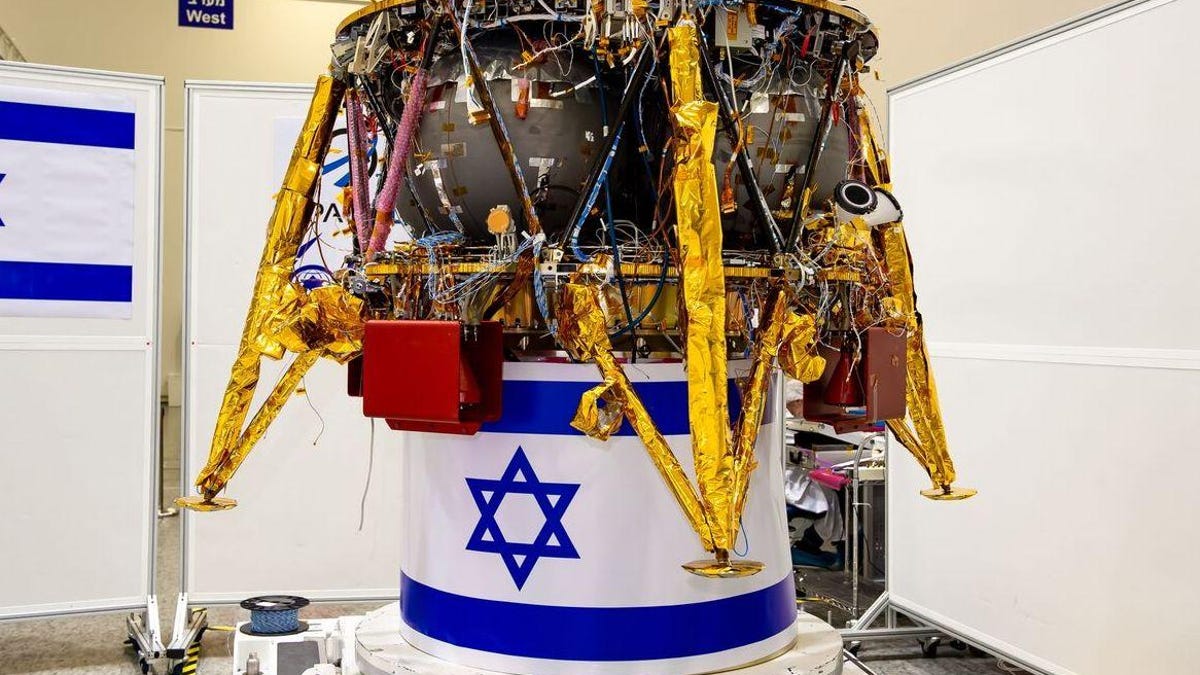Israeli lunar lander Beresheet back on track after glitch
The first privately funded moon mission had an early hiccup but still managed to light up its engines and get a little closer to its target.

This Israeli spacecraft is expected to land on the moon in early 2019.
The first commercial lander bound for the lunar surface is one step closer to the moon after inexplicably hitting the reset button.
The Beresheet spacecraft, about the size of a washing machine, launched aboard a SpaceX Falcon 9 rocket on Feb. 21. It was built by Israeli nonprofit and former Google Lunar XPrize team SpaceIL with support from Israel Aerospace Industries (IAI).
The lander's path to the moon is complex, involving a number of engine burns and swings around the Earth and then the moon before a planned landing April 11.
Beresheet's first maneuver was a success on Feb. 24, but a few days later a glitch caused the on-board computer to reset and a second maneuver was canceled as a result.
In a brief call with reporters Feb. 26, IAI space division manager Opher Doron said he was unsure if the delayed burn would affect the mission's target date for arriving at the moon.
"We are studying the implications and we hope it won't, but it may," he said.
After checking the spacecraft and finding all systems operational, the canceled burn was done on Thursday instead. Beresheet's main engine lit up for four minutes and lifted the probe to an elliptical orbit around Earth that will send it 131,000 kilometers (81,400 miles) away at its furthest point. Another maneuver is set for next week
Falcon 9 launched the Israeli moon lander, Beresheet, on Feb. 21.
"We've managed to find our way around several problems that we had," explained Doron. "It's quite normal for a spacecraft to have some 'teething problems' in its first days and we've overcome them all."
Beresheet also has an issue with the star tracker it uses for navigation being susceptible to blinding by the sun's rays.
"Currently we are coping with that situation without problems on the mission itself," Doron said Feb. 26. "We'll see how that develops as we go along."
It's not yet clear if the planned landing date of April 11 will be delayed due to the mission's early complications. SpaceIL has contingency landing dates and even backup landing sites built into its mission planning.
"We are on our way to the moon," affirmed SpaceIL CEO Ido Anteby on Thursday.

